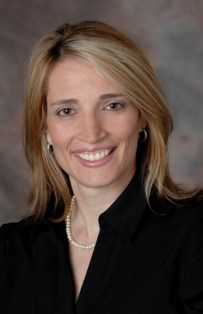Meet the Instructors of our Brand New Pudendal Neuralgia course!
In March of this year, H&W is thrilled to be offering a brand new course on Pudendal Neuralgia. Our Pelvic Rehab Report blogger interviewed the two instructors Loretta J. Robertson, PT, MS and Tracy Sher, MPT, CSCS about their course.

1. What can you tell us about this continuing education course that is not mentioned in the "course description" and "objectives" that are posted online?
Loretta: First, I just want to say we are both thrilled to be able to present this course and share all that we have learned in working with these patients. I have always wanted instructors in continuing education courses to “walk me through” their thinking processes. “Why did this patient history and presentation guide you toward diagnosis or treatment A as opposed to B?” So we are going to incorporate that information throughout the entire course.

Tracy: Yes- this is exciting for us to have this opportunity to blend anatomy and science with clinical decision making. We both see patients from all over the country (and world) who are concerned about having pudendal nerve entrapment or pudendal neuralgia. We have seen pudendal decompression surgery patients pre-op and post-op; and we have also helped patients avoid unnecessary surgeries. They are desperate for answers. What we find is that often times patients are misdiagnosed and go through many procedures or surgeries that may not be effective or necessary. Class participants will receive valuable information regarding clinical insight about appropriate evaluation strategies and clinical decision-making. Is it really a pudendal issue? Now what?
2. What inspired you to create this course?
L: PN is often misdiagnosed. These patients see on average 5-10 medical professionals before getting diagnosed and often suffer for years without help. I love teaching and would like to pass on all that I have learned so more therapists and patients can benefit. Also, at the hospital, we see patients from around the country and often other countries. I am often asked by PT’s how to help these patients. I thought it would be easier to put the information into a course because playing phone tag with multiple therapists is getting difficult!
T: We are both so passionate about what we do and see daily how we can make such a profound effect on patients and their families dealing with pudendal neuralgia. I agree that we need more therapists evaluating and treating this population, armed with exceptional clinical reasoning skills. In addition to the typical didactic environment, we hope to foster discussions by sharing case studies and allowing participants opportunities to share questions and comments about complex cases. We have seen a need to share this knowledge. Let’s do this!
3. Can you describe the clinical/treatment approach/techniques covered in this continuing education course?
L: We both strongly believe in an eclectic approach to treatment, so we will not be focusing on any one specific modality. I have found these patients really need a comprehensive approach to care – so we will incorporate education, ther-ex, manual therapy, functional activities and the latest information on research into chronic pain and the central nervous system.
T: We also want participants to recognize when less is more. Some manual treatment approaches can be too aggressive. There are times when it’s important to back away from traditional manual treatments and focus more on integrative neural reeducation and desensitization strategies. Informing patients about the reasons behind this treatment approach are important for buy-in and patient compliance and treatment success.
4. Why should a therapist take this course? How can these skill sets benefit his/ her practice?
L: Physical Therapists are often the first medical practitioners correctly identifying patients with pudendal neuralgia. We desperately need more PT’s who can recognize the diagnosis and start treatment with these patients early. I am always searching for therapists around the country where we can refer patients. Also, having this knowledge allows the therapist to start appropriate care and help the patient avoid unnecessary tests, injections and often surgery.
T: In relation to Loretta’s statement, sometimes the opposite is true as well. Physical Therapists are treating patients thinking that they have pudendal neuralgia, but have not properly ruled other out other issues. This is why we are so excited to share more insight about this area of pelvic therapy. I am often not the first therapist to see these complex pelvic pain patients. Sometimes they have seen two to three others before they find me. I am always surprised by how many important clinical findings are missed. This is not because the therapists are unwilling to do the best evaluation or treatments. They simply have not had advanced training or exposure to approaches in this area. We want the class participants to have the right clinical knowledge and skills to efficiently and effectively know how to treat these types of patients. This is complex stuff- Is it biopsychosocial, neural, local tissue or nerve irritation or a combination of all of this?
5. How has this knowledge and skill set benefited you in your own practices?
L:I can honestly say, this has changed my practice completely. I am now an integral part of a medical team and have an equal voice with the physicians in helping to decide the best medical approach for each patient. I also have far too many patients!
T: Loretta works with one of the leading surgeons dealing with pudendal issues. He admits openly and regularly that he relies on Loretta for her clinical judgment for the right plan of care with patients. Similar to Loretta, I am either the first person to finally point the patient in the right direction or brought on by a physician or healthcare team to play an integral role in care. This is because we are really able to discern possible driving factors of the symptoms and find conservative ways to treat these patients who have complex histories of pain and/or pelvic floor dysfunction.
6. What resources and research were used when writing this course?
L: We reviewed mountains of research articles, and the information on Chronic Pain came from the books, courses and personal conversations with Lorimer Moseley and David Butler. As previously mentioned, I also work with one of the physicians specializing in PN for the last 7 years. Through this time we have come to understand more, improved our diagnostic skills and treatment ideas. Our daily problem solving discussions have helped us improve our care. I will bring all that we have learned – both the successes and failures to the course.
T: There’s not a lot of research specific to evaluation and treatment of pudendal nerve diagnoses yet, but this is moving in a forward direction. Also, some of the criteria for determining these diagnoses are often misleading. We want to help direct the participants to find good research on pelvic pain diagnoses and the brain/pain connection. We are excited to present pelvic pain and brain research in conjunction with our clinical experience and outcomes.
By accepting you will be accessing a service provided by a third-party external to https://hermanwallace.com./








































